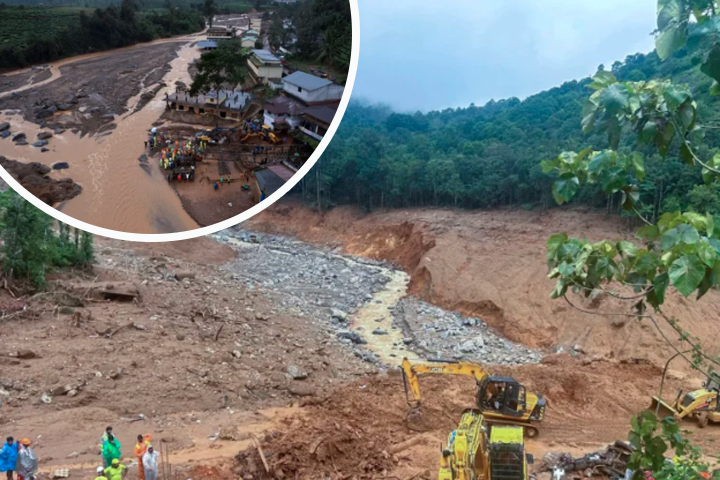


WAYANAD, India—Hopes of locating more than 180 missing persons alive dwindled Thursday as rescue personnel combed amid muck and rubble for a third day following landslides caused by heavy rains that killed at least 194 people in southern India.
The rescue effort was difficult in a wooded, mountainous terrain as additional rain poured, according to PM Manoj, a spokeswoman for Kerala's top elected official. Nearly 40 dead were discovered 30 kilometers (20 miles) from the location in Wayanad district where the biggest landslides occurred, having been washed down the Chaliyar River.
Early Tuesday, torrents of muck and water surged over the district's mountainous tea fields and communities. They crushed buildings and wrecked bridges, and rescuers had to extricate people from beneath mud and rubble.
“This is one of the worst natural calamities Kerala state has ever witnessed,” Kerala’s top elected official, Pinarayi Vijayan, said.
According to Manoj, 187 persons were unaccounted for as of Thursday. In addition to those killed and missing, 186 persons were wounded. The majority of the casualties were tea estate laborers.
According to Vijayan, about 5,500 people had been evacuated, with over 1,100 rescue workers, helicopters, and heavy equipment participating.
The army was building a makeshift bridge after the main bridge in one of the most impacted locations was washed away. Images from the scene show rescue personnel wading through sludge and floodwater, as a land excavator removes debris.
Vijayan stated that the Mundakkai and Chooralmala regions had been completely damaged.
Manoj stated that around 8,300 individuals have been relocated to 82 government-run relief camps, where the government is providing food delivery and critical supplies.
Local volunteers walked several kilometers (miles) amid the rubble to help rescuers look for the missing. They also claimed to have discovered body pieces of several of those slain in the incident.
“We are finding bodies that have lost limbs. Sometimes we find only limbs,” said Shakir Husain, a local shopkeeper.
The area is famous for its beautiful tea and cardamom farms, and hundreds of plantation workers live in neighboring temporary shelters. Only 30 of the almost 400 dwellings were undamaged. Husain said that the remainder had been carried away by landslides.
“This was a very beautiful place. I used to visit here many times. My friend had three houses here. Now there is nothing left,” he said.
Kerala, one of India's most popular tourist destinations, is susceptible to severe rainfall, floods, and landslides. The Indian Meteorological Department said that Wayanad district received up to 28 cm (11 inches) of rain on Monday and Tuesday.
Severe floods occur often in India during the monsoon season, which lasts from June to September and accounts for the majority of South Asia's yearly rainfall. The rains are critical for rain-fed crops sown throughout the season, but they can wreak considerable damage.
Heavy rains have caused havoc in several regions of India in recent days.
Schools in New Delhi, India's capital, were closed on Thursday after severe rains the day before swamped roads, trapped residents, and killed at least two people, according to the Press Trust of India. More rainfall was forecast in the following days.
Heavy rains and two cloudbursts swept away homes, flooded highways, and destroyed infrastructure in Himachal Pradesh, killing three people and leaving nearly 40 missing, according to officials. Following severe rains on Wednesday, four persons were killed in Uttarakhand, the adjacent state.
Meanwhile, lightning struck eastern Bihar state on Thursday, killing at least 13 people, including three children, according to a statement from the chief minister's office. When lightning struck, the majority of the fatalities were out in the fields planting rice.